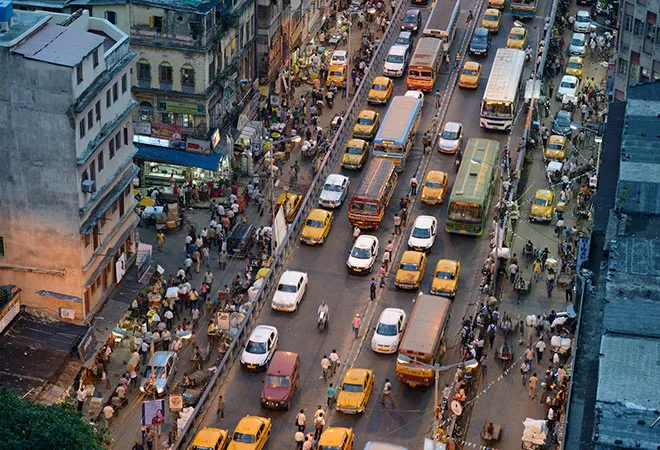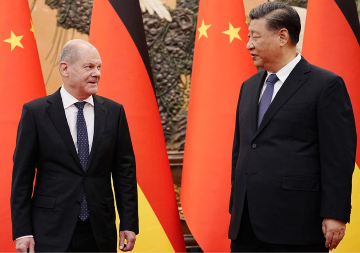
It appears that COVID-19 may somewhat delay the exercise and results of Census 2021. The pandemic has impacted the census schedule in regard to the updating of the National Population Register (NPR) as well as the first phase of Census 2021 operations. These had to be perforce postponed on account of the pandemic. The Union home ministry is currently engaged in considering possible ways to deal with the closures in different states and the likely shortage of enumerators and census functionaries during the pandemic. However, whenever the outcomes are announced, it would be interesting to compare the trends of the past censuses with the results of Census 2021. This article wishes to summarise the key trends that emerged from the past decennial censuses, primarily post-independence, and envisage what we could generally expect from the Census of 2021 in regard to urbanisation. All data marshalled for this article are derived from decennial censuses, unless otherwise indicated.
The first unmistakable trend emerging from decadal censuses of the past and most likely to be confirmed by Census 2021 is that no matter what we do with the villages and rural development, India will continue to urbanise.
Over the last hundred years, since 1911, India has been uninterruptedly urbanising. This has happened decade after decade without fail. In 1911, the percentage of urbanisation was 10.29 and this reached 17.29 percent by 1951. By 2011, the percentage had reached 31.16, an addition of 20.87 percent, at an average of 2.09 percent per decade. On the other hand, the national rural percentage has been constantly dropping, down from 89.71 percent in 1911 to 68.84 percent in 2011. This works out to a total reduction of 20.87 percent at an average of 2.09 percent per decade, exactly and inversely proportional to the rising figures of urbanisation. True, India’s rate of urbanisation has been slow compared to many of the developed nations; but the movement has been unidirectional — in the direction of urbanisaton.
This trend has been confirmed by United Nation’s estimates highlighted in “World Urbanization Prospects 2018.” It puts India’s urban population at 460.78 million in 2018 and at 34 percent of its total population. It would be apposite to add that while India proceeds towards larger urbanisation, its future pace of urbanisation will depend on how rapid is its economic growth. Higher annual rates of GDP growth will generally translate into more rapid urbanisation. In fact, one could broadly settle the dispute about the rate of economic growth in light of the rate of urbanisation — greater the urbanisation percentage, better the rate of economic growth.
The second clear trend of the past has been that India has consistently added to the number of towns and cities over the decades and will stay on course to add many more urban settlements.
In 1911, she had 1,825 urban agglomerations (UAs)/towns and in 1951, their number was 2,843. By 2011, the country had 7,935 of them, an addition of 5,572, at an average of 1,114 per decade. This indicates that many rural settlements across the country that were strategically located and had growth potential, transformed their economy and added to their demography to satisfy norms of an urban settlement and graduated to being towns. What the averages cited above do not reveal is that in the decades earlier to independence, the rise was very slow. This process appears to have gathered pace during the decades of 1991-2001 and 2001-2011. In the first of these decades India added 1,393 UAs/towns and in the latter, 1,774 UAs/towns. While the trend of more urban settlements emerging appears destined to continue, what would be interesting to see is the total number of such additional settlements that emerge in Census 2021.
The third past trend has been that India has continued to add many more metropolitan cities (cities with a million and above population).
In 1951, India had five metropolitan cities (Kolkata, Mumbai, Delhi, Chennai and Hyderabad). By 2011, there were 52 metropolitan cities in the country. The pace here is also picking up. Between 1951 and 1971, India added two metropolises per decade. However, between 1971 and 2011, India added three, eleven, twelve and seventeen in each successive decade. This process does not seem destined to reverse in the near future. Additionally, many more of these metropolitan cities will convert themselves into 5 million plus and 10 million plus cities.
A corollary of the third trend is the fourth — metropolitan towns over the decades have held larger and larger percentages of the urban population.
In 1951, 18.9 percent of the urban population was in metropolises. This rose to 23.6, 27.7, 37.8 and 42.3 percent in each successive decade. In other words, in 2011, fifty-two metropolitan towns held 42.3 percent of India’s urban population and 7,883 other cities and towns held 47.7 percent of the total urban population. An analysis of the past census figures clearly reveals that in contrast to the metropolitan cities that demographically grew fastest among urban settlements, Class I to Class VI towns grew at about half the rate of metropolitan cities. Given the economic might of the metropolises, this trend is not likely to change in Census 2021.
A fifth trend revealed by past censuses is that while India’s largest cities continued to add to their demography, their inter se rank underwent variations.
Between 1951 and 2011, Delhi grew 6.7 times its 1951 population, Bengaluru 4.8 times, Ahmedabad 4.5 times, Mumbai 3.8 times, Pune 3.7 times, Kolkata 3 times, Chennai 2.6 times and Hyderabad 2.5 times. However, as the cited figures demonstrate, some have grown faster than the others, depending on local and national factors. As a result, their inter se rank has changed. In 1951, Kolkata was the largest city followed by Mumbai, Chennai, Delhi, Hyderabad, Ahmedabad, Bengaluru, Kanpur, Pune and Lucknow. By 1961, Delhi went ahead of Chennai. In 1971, Nagpur displaced Lucknow as the tenth largest Indian city. The year 1981 saw the rise of Mumbai as the largest city in the country and Bengaluru went ahead of Ahmedabad and Hyderabad. By 2001, Surat emerged as the ninth largest city. In 2011, Delhi displaced Kolkata as the second largest city and Jaipur entered the top ten as the tenth largest city. The Census 2021 is likely to continue to show changes in inter se ranks. All trends now indicate that in the next decade Delhi would emerge as India’s most populated city and is even predicted in the near future to become the largest city in the world, overtaking Tokyo.
A sixth urban trend reflects similar inter se changes in the rankings of the states in regard to their urban percentages.
Until 1991, among the larger states, Maharashtra stood as the most urbanised (31.17 percent), followed by Tamil Nadu (30.26), Gujarat (28.02), Karnataka 924.31) and West Bengal (24.75). However, in 2001, Tamil Nadu went ahead of Maharashtra (42.4 percent) with the highest urban percentage of 43.86 percent. In 2011, Maharashtra slipped another position, overtaken by Kerala with an urban percentage of 47.72 percent. In the entire list of states, there were many more changes and these are likely to continue in 2021.
What would be interesting to watch is how the states rank in 2021 in terms of urbanisation, what impact the reverse migration from India’s largest cities that was triggered by the pandemic COVID-19 will have on their demography and economy, and whether Indian mega and metropolitan cities have continued with the slumming of India.
The views expressed above belong to the author(s). ORF research and analyses now available on Telegram! Click here to access our curated content — blogs, longforms and interviews.




 PREV
PREV


